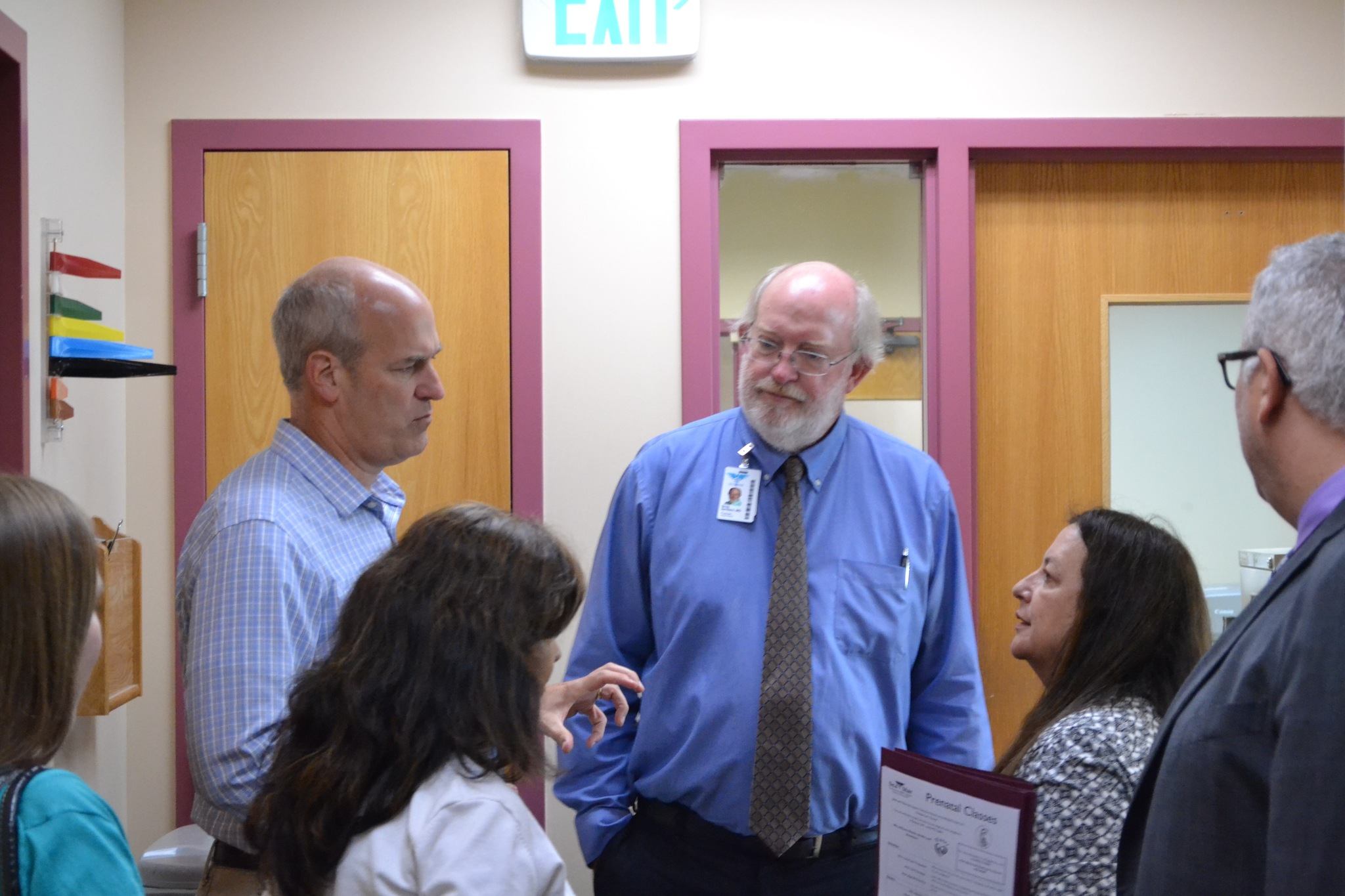MARYSVILLE – The shortage of family practice doctors nationwide is well-known.
But Sea Mar Community Health Center in Marysville hopes to help with that.
Dr. Greg Sanders of the center told U.S. Rep. Rick Larsen, D.-Wash. in a meeting Monday that the center is planning to start a three-year residency program starting in July 2017. Construction is going on now at the center at 9710 State Ave. so the six family practice doctors each year have a place to see patients.
Sea Mar will foot the bill for the program, but asked Larsen if the federal government might help in the future. The feds help pay for hospital residencies, but not community health centers.
Sanders said the residents will received about $60,000 each of the three years. The hope is they will stay in this area and open a family practice, or for Sea Mar or in community health “helping the underserved” somewhere.
He expects up to 800 student doctors worldwide to apply for the six spots each year, for a total of 18.
Sanders said state government does pitch in about $20,000 a year for each resident.
“We’re large enough to support it,” he said.
Sanders added that, “We’d love to recruit locally,” for students because they would more likely stay in the area. Having the Washington State University medical school in Everett will help in the future.
Sanders said he would like to get some Latino doctors locally, especially since Latino activists actually helped Sea Mar (short for Seattle Marysville) get its start in 1992. But chances are slim since there are only about 550 Latino doctors nationwide.
Sea Mar keeps expanding, with facilities all over Western Washington serving medical, dental and mental health needs.
Sea Mar program manager Cecilia Salduna told Larsen about the 96 women who are receiving O.B. care there. She explained there actually are two programs for children: prenatal then following the baby to age 1, the other until age 17. The goal of the first program is to reduce low-birth rate, which can lead to other problems later on.
Salduna said their center is one of the few that takes Medicaid. She added they keep in touch with each mom every week, they each have a care plan and they even have outreach to the high schools.
“We provide everything they need,” she said.
Mary Bartolo, executive vice president, added, “If a patient is high-risk, we will go to them.”



